 00:27:00
00:27:00
Roles of the Ubiquitin System in Health and Disease
The selective degradation of many short-lived proteins in eukaryotic cells is carried out by the ubiquitin-mediated proteolytic system. In this pathway, proteins are targeted for degradation by covalent ligation to ubiquitin, a highly conserved small....
More details | Watch now 00:31:00
00:31:00
Structural Aspects of Protease Control in Health and Disease
This lecture starts out with a very brief review of the history of protein crystallography and continue with our studies since 1970 on proteolytic enzymes and their control. Proteolytic enzymes catalyse a very simple chemical reaction, the hydrolytic....
More details | Watch now 00:32:00
00:32:00
Aquaporin Water Channels – From Atomic Structure to Malaria
Aquaporin channels allow water to rapidly cross cell membranes in all living organisms. AQP1 confers red cells and proximal renal tubules with high water permeability. Present in renal collecting duct, AQP2 is regulated by vasopressin, and human muta....
More details | Watch now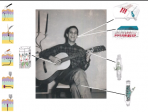 00:32:00
00:32:00
Tickling Worms: Surprises From Basic Research
Research, at least my research, has never been linear. I have found that my lab and I often double back on problems after years of inactivity or go off in entirely new directions as dictated by the work and peoples interests. This lack of direction....
More details | Watch now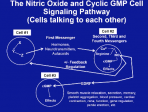 00:42:00
00:42:00
Discovery of Nitric Oxide and Cyclic GMP in Cell Signaling and Their Role in Drug Development
The role of nitric oxide in cellular signaling in the past three decades has become one of the most rapidly growing areas in biology. Nitric oxide is a gas and a free radical with an unshared electron that can regulate an ever-growing list of biolog....
More details | Watch now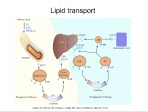 00:34:00
00:34:00
Structural Studies on Cholesterol Transport
Cholesterol has two essential functions in our bodies: It is an important component of cell membranes and it serves as the starting material for the synthesis of bile acids, steroid hormones, and other compounds. The human body obtains necessary cho....
More details | Watch now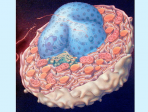 00:29:00
00:29:00
Membrane Proteins: Importance, Functions, Mechanisms
Biological membranes define and compartmentalize the cells of higher organisms. Consisting of membrane proteins and lipids, they are basically impermeable for ions and polar substances, so that electric voltages (_membrane potentialsî) and substanc....
More details | Watch now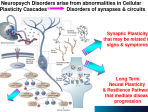 00:42:00
00:42:00
Short-term Synaptic Plasticity
Our brain is a network of about 10^11 neurons, which are connected via synapses. A neuron typically receives input from about 10000 other neurons, which can be either excitatory or inhibitory. The neuron integrates these inputs and generates an actio....
More details | Watch now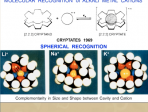 00:34:00
00:34:00
Towards Adaptive Chemistry
Supramolecular chemistry lies beyond molecular chemistry. It aims at implementing highly complex chemical systems from molecular components held together by non-covalent intermolecular forces and effecting molecular recognition, catalysis and transp....
More details | Watch now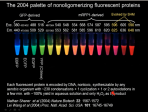 00:33:00
00:33:00
Molecules Against Cancer or for Long-Term Memory Storage
For cancer diagnosis and therapy, we are developing activatable cell-penetrating peptides (ACPPs), synthetic molecules with a novel amplifying mechanism for homing to diseased tissues. ACPPs are polycationic cell-penetrating peptides whose cellular ....
More details | Watch now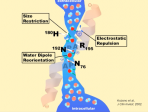 00:32:00
00:32:00
Aquaporin Water Channels _ From Atomic Structure to Malaria
Aquaporin (AQP) water channel proteins enable high water permeability in certain biological membranes. Discovered in human red cells but expressed in multiple tissues, AQP1 has been thoroughly characterized and its atomic structure is known. Expres....
More details | Watch now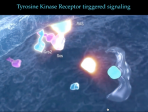 00:39:00
00:39:00
You can see a lot by observing: Optical Microscopy 2.0
Biological research and medicine were transformed by the invention and improvement of the optical microscope. Since the early 1990s, there has been another revolution in optical imaging, and manipulation of individual biological molecules and bio-mo....
More details | Watch now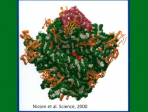 00:28:00
00:28:00
From the Structure of the Ribosome to New Antibiotics
Structural studies of the ribosome exemplify the evolution of structural studies in cell biology from the early negatively stained images of macromolecular assemblies in whole cells, to a detailed atomic understanding of the mechanisms of action of a....
More details | Watch now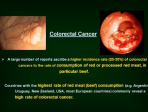 00:31:00
00:31:00
Infections Linked to Human Cancers: Mechanisms and Synergisms
Slightly more than 20% of the global cancer incidence is presently being linked to viral, bacterial, or parasitic infections. The mechanisms by which these agents mediate malignant transformation differ substantially. Some contribute directly, freq....
More details | Watch now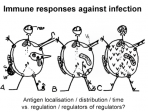 00:32:00
00:32:00
Why Do We Not Have a Vaccine Against HIV or Tuberculosis?
Analysis of the immune system is fascinating and progressing rapidly. As a field of medical enquiry, it has however, drifted and turned purely academic. This is because interest and appreciation of protective immunity in infectious disease medicine....
More details | Watch now 00:32:00
00:32:00
On The Road Toward an HIV Cure
Since the first cases of AIDS in 1981 and the identification of its etiological agent in 1983, much progress has been made in both the development of tools to prevent and treat HIV infection and the access to these tools. In particular, the wide arr....
More details | Watch now 00:30:00
00:30:00
Inheritance from Teratomas
The techniques and concepts that have resulted in the identification and isolation of embryonic stem cells have come from studies with mouse teratocarcinomas. Embryonic stem cells isolated from normal mouse embryos may be grown in tissue culture and....
More details | Watch now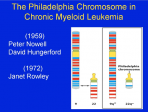 00:31:00
00:31:00
Forging a Genetic Paradigm for Cancer
It is now axiomatic that, no matter what its causes, cancer ultimately arises from the malfunction of genes. A number of clues prefigured this paradigm: the persistence of the malignant phenotype through countless cell divisions; the mutagenicity of....
More details | Watch now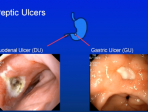 00:32:00
00:32:00
Man vs. Helicobacter _ The past 50,000 years and the next 50
The epidemiology of Helicobacter pylori continues to be an area of discovery and controversy in the 21st century. The transmission of this bacterium from mother to child allows Helicobacter DNA to mimic the evolution of maternal mitochondria DNA. B....
More details | Watch now 00:31:00
00:31:00
Deciphering Immunity by Making It Fail
Infectious microbes collectively represent the strongest selective pressure operating on our species, and over hundreds of millions of years, drove the evolution of the sophisticated immune system we have today. While the general outlines of immune ....
More details | Watch now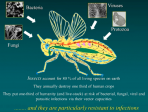 00:32:00
00:32:00
Innate Immunity: From Flies to Humans
Flies challenged with bacteria or fungi rapidly transcribe a battery of genes encoding potent antimicrobial peptides which oppose the invading microorganisms. Genetic analysis has identified two signaling cascades which control their expression: (1)....
More details | Watch now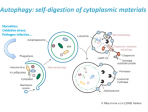 00:31:00
00:31:00
Genes and Proteins that Control Secretion and Autophagy
The broad outlines of the secretory pathway were established by pioneering EM and cell fractionation experiments conducted by George Palade in the 1960s. Beginning in the mid 1970s and early 80s, my laboratory isolated a series of conditionally leth....
More details | Watch now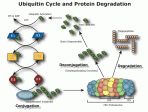 00:40:00
00:40:00
Roles of Protein Degradation in Health and Disease
The selective degradation of many short-lived proteins in eukaryotic cells is carried out by the ubiquitin-mediated proteolytic system. In this pathway, proteins are targeted for degradation by covalent ligation to ubiquitin, a highly conserved sma....
More details | Watch nowBasic Science and Co-entrepreneurship, my Experience
The design and development of inhibiting (or occasionally activating) ligands of target proteins in medicine and crop protection guided by molecular structures and functions has become an established technology in academia and industry recently._ Dr....
More details | Watch now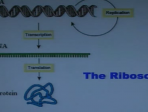 00:37:00
00:37:00
The Amazing Ribosome
Ribosomes are the universal cellular machines that act as polymerases that translate the genetic code into proteins. They posses spectacular architecture accompanied by inherent mobility that facilitate their smooth performance in decoding, peptide ....
More details | Watch now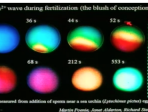 00:41:00
00:41:00
Building and Breeding Molecules to Spy on Cells, Tumors, and Organisms
Molecules to observe and manipulate biological systems can be devised by a variety of strategies, ranging from pure chemical design and total synthesis to genome mining and high-throughput directed evolution. Examples of both successes and failures ....
More details | Watch now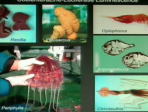 00:26:00
00:26:00
Chemistry of Bioluminescence
There are numerous kinds of luminous organism on earth. Mysterious emission of light from them inspired the curiosity of mankind ever since the ancient times. In history, Raphael Dubois discovered luciferin and luciferase from one of them, a click ....
More details | Watch now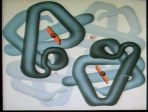 00:36:00
00:36:00
Structural Genomics – Exploring the Protein Universe
In today's post-genomic era, with the availability of the complete DNA sequences of a wide range of organisms, structural biologists are faced with new opportunities and challenges in _structural genomics”. In contrast to classical structural biol....
More details | Watch now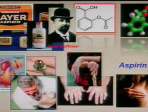 00:31:00
00:31:00
Why Our Proteins Have to Die so We Shall Live
Between the sixties and eighties, most life scientists focused their attention on studies of nucleic acids and the translation of the coded information. Protein degradation was a neglected area, considered to be a non-specific, dead-end process. Whil....
More details | Watch now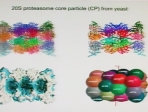 00:42:00
00:42:00
Molecular Machines for Protein Degradation Inside Cells
Within cells or subcellular compartments misfolded and/or short-lived regulatory proteins are degraded by protease machines, cage-forming multi-subunit assemblages. Their proteolytic active sites are sequestered within the particles and located on t....
More details | Watch now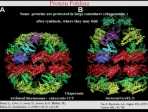 00:35:00
00:35:00
Proteasome and DegP Protease, Mechanisms and Drug Design
Within cells or subcellular compartments, mis-folded and/or short-lived regulatory proteins are degraded by protease machines, cage-forming multi-subunit assemblages, the proteasome and HtrA/DegP. They are essential components in very complex regul....
More details | Watch now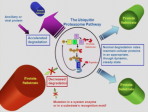 00:29:00
00:29:00
The Ubiquitin Proteolytic System as a Novel Drug Development Platform
Between the 50s and 80s, most studies in biomedicine focused on the central dogma - the translation of the information coded by DNA to RNA and proteins. Protein degradation was a neglected area, considered to be a non-specific, dead-end process. ....
More details | Watch now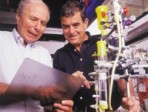 00:28:00
00:28:00
Roles of the Ubiquitin System in Health and Disease
The selective degradation of many short-lived proteins in eukaryotic cells is carried out by the ubiquitin-mediated proteolytic system. In this pathway, proteins are targeted for degradation by covalent ligation to ubiquitin, a highly conserved sma....
More details | Watch now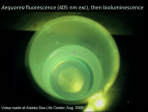 00:33:00
00:33:00
Engineering Molecules for Fun, Profit, and Clinical Relevance
Molecules to observe and manipulate biological systems and disease processes can be devised by a variety of strategies, ranging from pure chemical design and total synthesis to genome mining and high-throughput directed evolution. Examples of both ....
More details | Watch now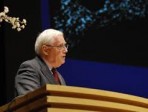 00:32:00
00:32:00
The Fuel of Life
The lecture will be devoted to the topic of how the biological world supplies itself with energy to make biology work, and what medical consequences ensue when the energy supply chain in our bodies is damaged or defective. We derive our energy from....
More details | Watch now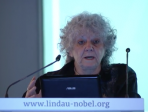 00:33:00
00:33:00
Curiosity and its Fruits: From Basic Science to Advanced Medicine
Ribosomes, the universal cellular machines that translate the genetic code into proteins, are targeted by many antibiotics that paralyze them by binding to their functional sites. Antibiotics binding modes, inhibitory actions and synergism pathways....
More details | Watch now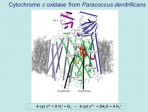 00:35:00
00:35:00
Structure and Mechanism of Otto Warburg’s Respiratory Enzyme, the Cytochrome c Oxidase
The oxygen, you breathe in, is converted to water by cytochrome c oxidase, using electrons provided by cytochrome c and protons from the aqueous milieu of the body. This fundamental enzyme has been discovered already in 1886, and studied extensivel....
More details | Watch nowConformational Plasticity of G-Protein-Coupled Receptors (GPCRs) studied by NMR in Solution
As an introduction, some principles of nuclear spin physics applying to studies of integral membrane proteins (IMP) will be reviewed. Applications of resulting nuclear magnetic resonance (NMR) techniques will then be illustrated with studies of G-p....
More details | Watch now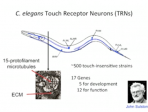 00:32:00
00:32:00
Tickling Worms: Surprises From Basic Research
Research, at least my research, has never been linear. I have found that my lab and I often double back on problems after years of inactivity or go off in entirely new directions as dictated by the work and people's interests. This lack of direct....
More details | Watch now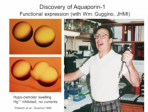 00:30:00
00:30:00
Aquaporin Water Channels: From Atomic Structure to Malaria
Aquaporin (AQP) water channel proteins enable high water permeability of certain biological membranes. Discovered in human red cells but expressed in multiple tissues, AQP1 has been thoroughly characterized and its atomic structure is known. Expr....
More details | Watch now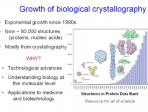 00:34:00
00:34:00
Proteases and Their Control in Health and Disease
Proteolytic enzymes catalyse a very simple chemical reaction, the hydrolytic cleavage of a peptide bond. Nevertheless, they constitute a most diverse and numerous lineage of proteins. The reason lies in their role as components of many regulatory....
More details | Watch now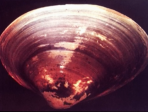 00:33:00
00:33:00
The Ubiquitin System
The selective degradation of many short-lived proteins in eukaryotic cells is carried out by the ubiquitin-mediated proteolytic system. In this pathway, proteins are targeted for degradation by covalent ligation to ubiquitin, a highly conserved sma....
More details | Watch now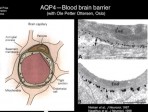 01:18:00
01:18:00
Aquaporin Water Channels: From Atomic Structure to Clinical Medicine
Peter Agre shared the 2003 Nobel Prize in Chemistry with Roderick MacKinnon “for discoveries concerning channels in cell membranes.” Here he gives a lecture in Russia as part of the Nobel Prize Inspiration Initiative
More details | Watch now 01:35:00
01:35:00
Making Sense of Scents
A panel of experts discussed the powerful effects that fragrances have on enhancing lives, rehabilitation and triggering reactions and memories.
More details | Watch now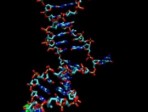 00:05:00
00:05:00
Dynamic Molecular Simulation
The use of computer simulation continues to advance bringing scientists and engineers the insight of graphical simulations at the molecular level
More details | Watch now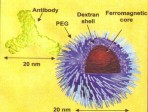 00:05:00
00:05:00
Anti-Body Coated Magnetic Nanoparticles
Philip Shlenoff, recent high school graduate, gives a presentation of his work and opportunity at the Florida State University Dept. of Chemistry. Under the supervision of Zaki Estephan, Philip has actively participated in research that targets canc....
More details | Watch now 00:17:00
00:17:00
The Red Tide
The chemical reactions that cause 'red tide', as well as the effect of the chemical processes.
More details | Watch now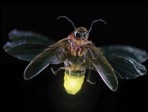 00:10:00
00:10:00
Chemi- and bio-luminescence
Chemiluminescence and bioluminescence. General chemistry explained and examples such as fireflies, Wintergreen mints, etc. are introduced
More details | Watch now
